Only in the NHL
Brooks Laich, man of honor.

Fools swear they wise, wise men know they foolish
Excerpted from The American Heritage New History of the Civil War, Chapter 6:
D-Day was a pretty bad day, perhaps 3,000 Allied troops died taking that beachhead.
Back in the late 80's I rode my bike through the Amish Country. A beautiful experience, and an opportunity to connect with the landscape and people more closely than one could through, say, the window of a tour bus.

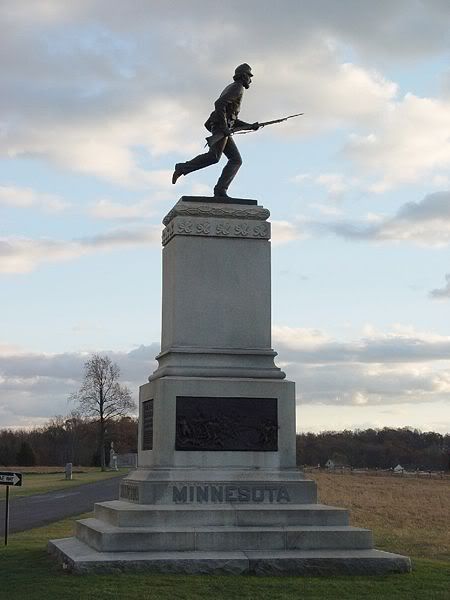
On the afternoon of July 2, 1863 Sickles' Third Corps, having advanced from this line to the Emmitsburg Road, eight companies of the First Minnesota Regiment, numbering 262 men were sent to this place to support a battery upon Sickles repulse.
As his men were passing here in confused retreat, two Confederate brigades in pursuit were crossing the swale. To gain time to bring up the reserves & save this position, Gen Hancock in person ordered the eight companies to charge the rapidly advancing enemy.
The order was instantly repeated by Col Wm Colvill. And the charge as instantly made down the slope at full speed through the concentrated fire of the two brigades breaking with the bayonet the enemy's front line as it was crossing the small brook in the low ground there the remnant of the eight companies, nearly surrounded by the enemy held its entire force at bay for a considerable time & till it retired on the approach of the reserve the charge successfully accomplished its object. It saved this position & probably the battlefield. The loss of the eight companies in the charge was 215 killed & wounded. More than 83% percent. 47 men were still in line & no man missing. In self sacrificing desperate valor this charge has no parallel in any war. Among the severely wounded were Col Wm Colvill, Lt Col Chas P Adams & Maj Mark W. Downie. Among the killed Capt Joseph Periam, Capt Louis Muller & Lt Waldo Farrar. The next day the regiment participated in repelling Pickett's charge losing 17 more men killed & wounded
 "You people of the South don't know what you are doing. This country will be drenched in blood, and God only knows how it will end. It is all folly, madness, a crime against civilization! You people speak so lightly of war; you don't know what you're talking about. War is a terrible thing! You mistake, too, the people of the North. They are a peaceable people but an earnest people, and they will fight, too. They are not going to let this country be destroyed without a mighty effort to save it… Besides, where are your men and appliances of war to contend against them? The North can make a steam engine, locomotive, or railway car; hardly a yard of cloth or pair of shoes can you make. You are rushing into war with one of the most powerful, ingeniously mechanical, and determined people on Earth—right at your doors. You are bound to fail. Only in your spirit and determination are you prepared for war. In all else you are totally unprepared, with a bad cause to start with. At first you will make headway, but as your limited resources begin to fail, shut out from the markets of Europe as you will be, your cause will begin to wane. If your people will but stop and think, they must see in the end that you will surely fail." -- William Tecumseh Sherman
"You people of the South don't know what you are doing. This country will be drenched in blood, and God only knows how it will end. It is all folly, madness, a crime against civilization! You people speak so lightly of war; you don't know what you're talking about. War is a terrible thing! You mistake, too, the people of the North. They are a peaceable people but an earnest people, and they will fight, too. They are not going to let this country be destroyed without a mighty effort to save it… Besides, where are your men and appliances of war to contend against them? The North can make a steam engine, locomotive, or railway car; hardly a yard of cloth or pair of shoes can you make. You are rushing into war with one of the most powerful, ingeniously mechanical, and determined people on Earth—right at your doors. You are bound to fail. Only in your spirit and determination are you prepared for war. In all else you are totally unprepared, with a bad cause to start with. At first you will make headway, but as your limited resources begin to fail, shut out from the markets of Europe as you will be, your cause will begin to wane. If your people will but stop and think, they must see in the end that you will surely fail." -- William Tecumseh Sherman
My goodness, Confederate History Month is rushing to a close, and there is so much we haven't talked about - Jeb Stuart's comeuppance at the Battle of Brandy Station, the last Confederate General to surrender, the Irish Confederates, the Battle of Bentonville - we've barely touched on the Western Campaign...

I watched their progress with intense interest. The fire along the rebel line was terrific. Cannon and musket balls filled the air: but the damage done was in small proportion to the ammunition expended. The pursuit continued until the crest was reached, and soon our men were seen climbing over the Confederate barriers at different points in front of both Sheridan’s and Wood’s divisions. The retreat of the enemy along most of his line was precipitate and the panic so great that Bragg and his officers lost all control over their men. Many were captured, and thousands threw away their arms in their flight.
Stars and Stripes forever: A Proven Curative for Dropsy, Rickets, Melancholia, and Excessive Relaxation.
Nothing like an SS uniform to inspire a beatdown in the City of Brotherly Love.
Woke up in New York this morning, leaving this afternoon, but had a moment to reflect on the impact of the Confederacy on 44th Street. This is my old neighborhood from the good old analyst/tramp days of the 1990s, where anyone who could spin a story and work a spreadsheet could have a nice dinner and pay $500 for a bottle of wine sold in Napa for $50. I miss those days.
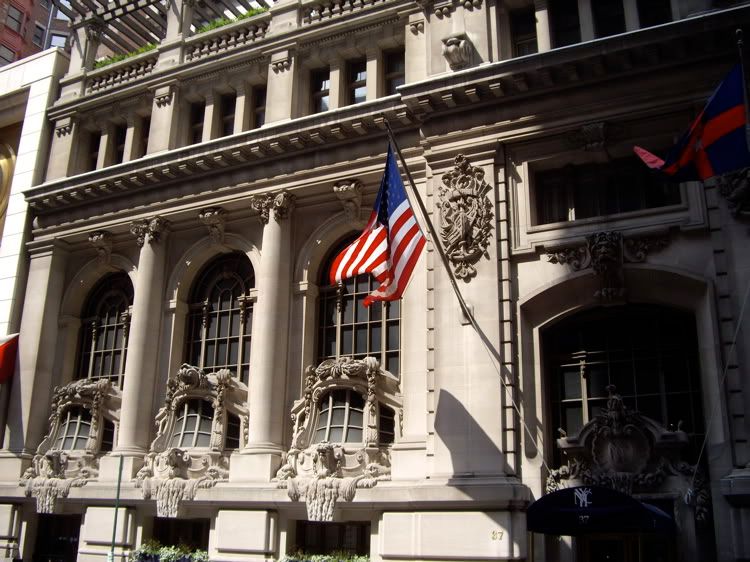
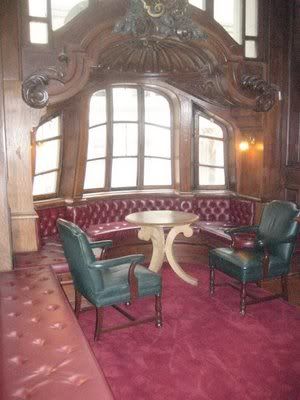
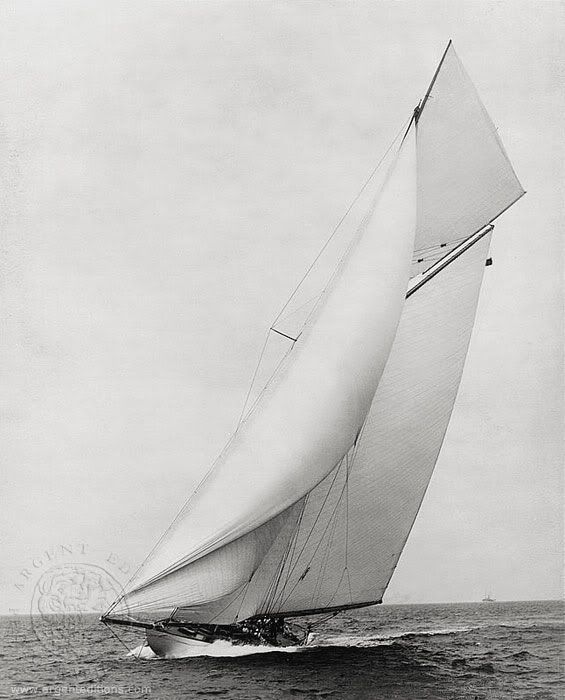
I'm currently passing over Sandusky, Ohio, near Johnson's Island, where the Union had a big prison camp. Purpose-built, prisoners were treated reasonably. At first. According to the Johnson's Island Preservation Society...
Prison life was severely impacted when the treatment of Union POWs in Confederate prisons such as Andersonville, Salisbury and Libbey, became known to the War Department. Rations were cut in half, and some items such as coffee, tea, and sugar were eliminated altogether. Prisoners were no longer allowed to buy food at the sutler’s store. However, they were still allowed to purchase such items as tobacco, clothing, pens, ink, and paper for letter writing. Packages from home could no longer include food and, much to the joy of the guards, items such as Virginia hams and alcoholic beverages were confiscated as contraband. However, even under these restrictions, the prisoners were eating better than many of those still fighting for the Confederacy.Lots of interesting stuff on the website. Of course men died at Johnson's Island, but only 200-300 out of 9,000 internees. There is a Confederate cemetery on the site, and considerable efforts were made to preserve it from the 1880s onward. In 1910 the United Daughters of the Confederacy dedicated a memorial statue:
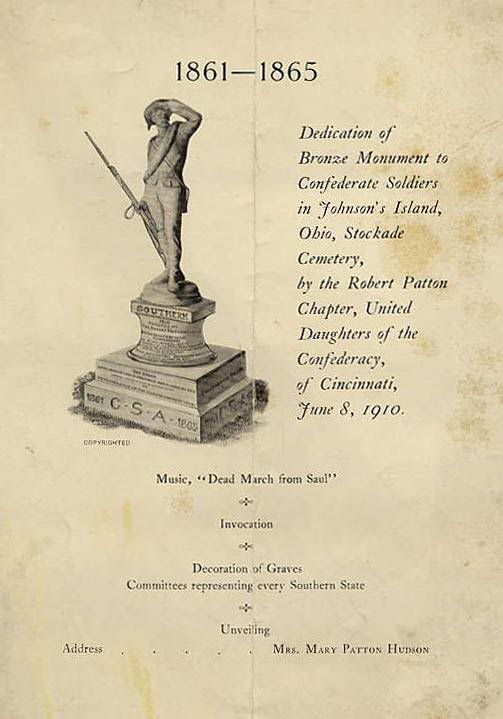
Busy day for the Seahawks front office. Let's see if I can do this without missing one.
Labels: Seahawkhttp://www.blogger.com/img/blank.gifs fans cannot be cured
 Seattle sports press strike Gold as Seahawks take Golden Domer Golden Tate in second round of NFL draft.
Seattle sports press strike Gold as Seahawks take Golden Domer Golden Tate in second round of NFL draft.
Labels: Seahawks fans cannot be cured
 Longhorn safety Earl Thomas was expected to go in the middle of the first round, nobody predicted the Seahawks would pick him.
Longhorn safety Earl Thomas was expected to go in the middle of the first round, nobody predicted the Seahawks would pick him.Labels: Seahawks fans cannot be cured
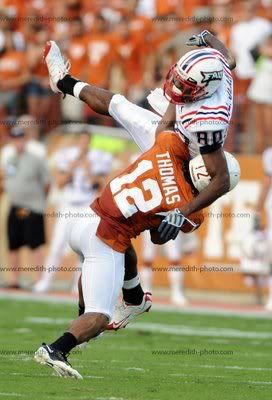

"Three bisexual men are suing a national gay-athletic organization, saying they were discriminated against during the Gay Softball World Series held in the Seattle area two years ago."
Pete Carroll tweets his draft plans.
"The bad behavior of Pittsburgh Steelers quarterback' Ben Roethlisberger resulted Wednesday in a six-game suspension by the NFL and reportedly has triggered what once would have been unthinkable: The Steelers are testing the market to trade him."
Giant scale 3-d printer, in a kind of magnesium epoxy sand-stone which requires no reinforcement. For sculptors and builders - good and terrible all at once.
Adam Savage blows up religion as he speaks to the Harvard Humanists.
I think one of the defining moments of adulthood is the realization that nobody's going to take care of you. That you have to do the heavy lifting while you're here. And when you don't, well, you suffer the consequences. At least I have. (And in the empirical study I'm performing about interacting with the universe, I am unfortunately the only test subject I have complete access to, so my data is, as they say, self-selected.) While nobody's going to take care of us, it's incumbent upon us to take care of those around us. That's community.
The fiction of continuity and stability that your parents have painted for you is totally necessary for a growing child. When you realize that it's not the way the world works, it's a chilling moment. It's supremely lonely.
So I understand the desire for someone to be in charge. (As a side note, I believe that the need for conspiracy theories is similar to the need for God.) We'd all like our good and evil to be like it is in the movies: specific and horrible, easy to defeat. But it's not. It's banal.
There's a quote I love: "Evil is a little man afraid for his job." I always thought some famous author said it, but I asked my 200,000 followers on Twitter today, and it turns out that Roy Scheider said it in Blue Thunder.
No one is in charge. And honestly, that's even cooler.
Dr. X posts this from Memphis, where he is researching his next book, Sun and Signification - A Semiotic History of Rockabilly:

The people should be informed that so long as an army can subsist among them recurrences of these raids must be expected, and we are determined to stop them at all hazards. ... Give the enemy no rest ... Do all the damage to railroads and crops you can. Carry off stock of all descriptions, and negroes, so as to prevent further planting. If the war is to last another year, we want the Shenandoah Valley to remain a barren waste.The mission was pillage, although rape was included at no extra charge.
It took me about eight months in all to write that song. I only had the music for it, and I didn't know what it was about at all. I'd sit down at the piano and play these chords over and over again. And then one day the rest of it came to me.

Headquarters Military Division of the Mississippi, In the Field, Kingston, Georgia, November 9, 1864
I'm really wondering if any national Republican leader has the balls to condemn not only slavery but the rebellion of the slave states to the United States; noting, by way of passing,that stopping this treason was the original Republican big idea.
Both sides in the Civil War contemplated acts beyond traditional warfare, according to legal documents, court testimony, historical records, books and newspaper accounts of the day. Artillery shells filled with chlorine for use on the battlefield were proposed by New York schoolteacher John Doughty early in the war. Lincoln refused to consider such chemical weapons, viewing them as being outside the laws of war. Sure that the Confederacy would rapidly overpower its enemies, President Jefferson Davis initially shied away from such measures as well.
But as the internecine conflict lengthened from months to years, and the casualties mounted from the thousands to the hundreds of thousands, the South's desperation spawned a largely untold story: a series of terrorist plots against Washington and New York that eerily foreshadowed September 11, 2001, and its aftermath.
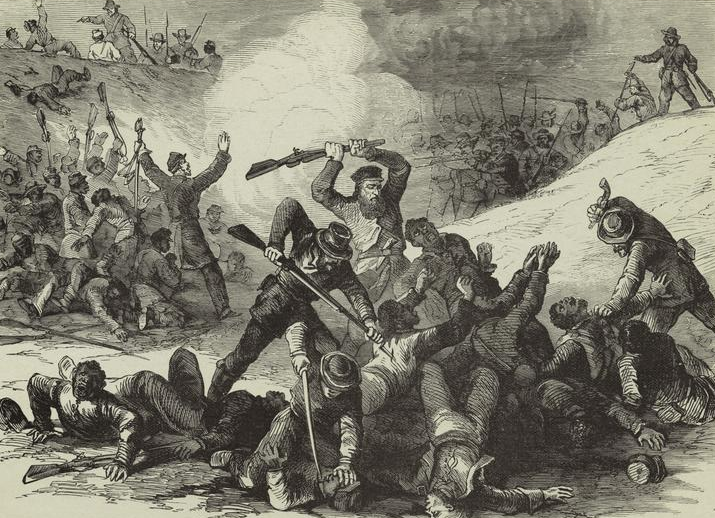
From Southern Political Report:
I ran a hypothesis test to determine if states left the Union to join the Confederacy over slavery, or whether that was more of a side issue. I located the declarations of secession for four different states that were available: South Carolina, Georgia, Mississippi, and Texas.
The word “slave” appears 82 times in these four state declarations. The states even refer to themselves as “Slave-Holding States.” I always thought that was a Northern term. On the other hand, the words “State’s rights,” “states’ rights” or “states rights” do not appear in any of these four secession declarations. The word “rights” appears 14 times and “right” appears 32 times, but many of these references involve “the right to own slaves.”
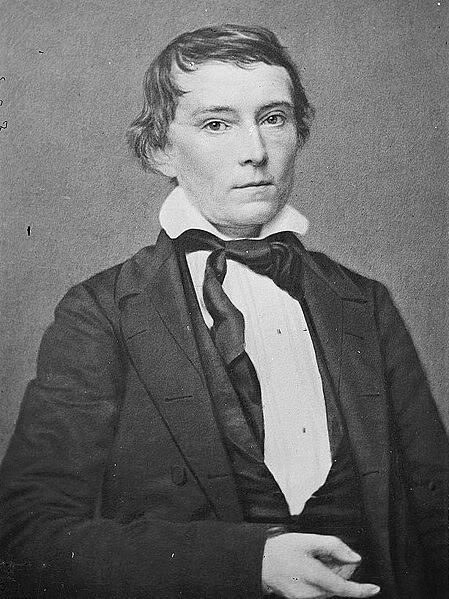
The prevailing ideas entertained by [Thomas Jefferson] and most of the leading statesmen at the time of the formation of the old constitution, were that the enslavement of the African was in violation of the laws of nature; that it was wrong in principle, socially, morally, and politically. It was an evil they knew not well how to deal with, but the general opinion of the men of that day was that, somehow or other in the order of Providence, the institution would be evanescent and pass away. This idea, though not incorporated in the constitution, was the prevailing idea at that time.
The constitution, it is true, secured every essential guarantee to the institution while it should last, and hence no argument can be justly urged against the constitutional guarantees thus secured, because of the common sentiment of the day. Those ideas, however, were fundamentally wrong. They rested upon the assumption of the equality of races. This was an error. It was a sandy foundation, and the government built upon it fell when the "storm came and the wind blew."
Our new government is founded upon exactly the opposite idea; its foundations are laid, its corner-stone rests, upon the great truth that the negro is not equal to the white man; that slavery subordination to the superior race is his natural and normal condition. This, our new government, is the first, in the history of the world, based upon this great physical, philosophical, and moral truth. This truth has been slow in the process of its development, like all other truths in the various departments of science. It has been so even amongst us.
Many who hear me, perhaps, can recollect well, that this truth was not generally admitted, even within their day. The errors of the past generation still clung to many as late as twenty years ago. Those at the North, who still cling to these errors, with a zeal above knowledge, we justly denominate fanatics. All fanaticism springs from an aberration of the mind from a defect in reasoning. It is a species of insanity. One of the most striking characteristics of insanity, in many instances, is forming correct conclusions from fancied or erroneous premises; so with the anti-slavery fanatics. Their conclusions are right if their premises were. They assume that the negro is equal, and hence conclude that he is entitled to equal privileges and rights with the white man.
If their premises were correct, their conclusions would be logical and just but their premise being wrong, their whole argument fails. I recollect once of having heard a gentleman from one of the northern States, of great power and ability, announce in the House of Representatives, with imposing effect, that we of the South would be compelled, ultimately, to yield upon this subject of slavery, that it was as impossible to war successfully against a principle in politics, as it was in physics or mechanics. That the principle would ultimately prevail. That we, in maintaining slavery as it exists with us, were warring against a principle, a principle founded in nature, the principle of the equality of men.
The reply I made to him was, that upon his own grounds, we should, ultimately, succeed, and that he and his associates, in this crusade against our institutions, would ultimately fail. The truth announced, that it was as impossible to war successfully against a principle in politics as it was in physics and mechanics, I admitted; but told him that it was he, and those acting with him, who were warring against a principle. They were attempting to make things equal which the Creator had made unequal.
In 1864 the war was taking on a desperate character for both sides. Despite the success at Gettysburg in 1863, the pursuit had been ineffective and the North had, once again, been unable to make significant progress against Virginia, the heart of the Confederacy.
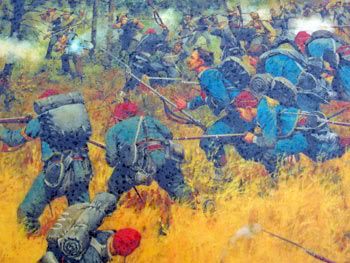
Grant in the Wilderness, after that first night in the Wilderness, went to his tent, broke down, and cried very hard. Some of the staff members said they'd never seen a man so unstrung.But, Foote continues, he wasn't crying the next morning. He got up and they fought again the next day. And then, as usual, the Union forces began to pack up and move out. In his fine Battle Cry of Freedom, James McPherson writes:
But instead of heading north, they turned south. A mental sunburst brightened their minds. It was not another "Chancellorsville ... another skedaddle" after all. "Our spirits rose," recalled one veteran who remembered this moment as a turning point in the war. Despite the terrors of the past three days and those to come, "we marched free. The men began to sing." For the first time in a Virginia campaign the Army of the Potomac stayed on the offensive after its initial battle.It was the beginning of the end for the Confederacy. Lee would have to face Grant again in two weeks at Spotsylvania, and in a month's time at Cold Harbor. In each of those battles, the Confederates inflicted more casualties than they suffered. But in percentage terms Lee's losses were greater, and Grant could make good his losses while Lee could not.
The U.S. Army will court martial a lieutenant colonel who refuses to deploy to Afghanistan because he considers orders from President Obama to be "illegal."
 Last year, I fearlessly predicted that the Seahawks would pick their left tackle of the future, Eugene Munroe, with the fourth selection in the 2009 NFL Draft -- the same Eugene Munroe who plays offensive guard for the Jaguars, now. (Of course, I was secretly hoping they would pick Michael Crabtree, who turned out to be a holdout diva with the Niners; it's okay, I am so over that guy.)
Last year, I fearlessly predicted that the Seahawks would pick their left tackle of the future, Eugene Munroe, with the fourth selection in the 2009 NFL Draft -- the same Eugene Munroe who plays offensive guard for the Jaguars, now. (Of course, I was secretly hoping they would pick Michael Crabtree, who turned out to be a holdout diva with the Niners; it's okay, I am so over that guy.) The number 14 will be less predictable. Defensive end Patrick Kearny announced his retirement, today, but even before, many were predicting Seattle would take DE Derrick Morgan of Georgia Tech (pictured here stealing the football from an LSU girly-man).
The number 14 will be less predictable. Defensive end Patrick Kearny announced his retirement, today, but even before, many were predicting Seattle would take DE Derrick Morgan of Georgia Tech (pictured here stealing the football from an LSU girly-man). But my favorite at number 14, as I have hinted previously, is the Clemson speedster C.J. Spiller (pictured here on a casual stroll to check field conditions, not setting it off very hard).
But my favorite at number 14, as I have hinted previously, is the Clemson speedster C.J. Spiller (pictured here on a casual stroll to check field conditions, not setting it off very hard).Labels: C.J. Spiller can run fast, Seahawks fans cannot be cured
Let's start with Andersonville.
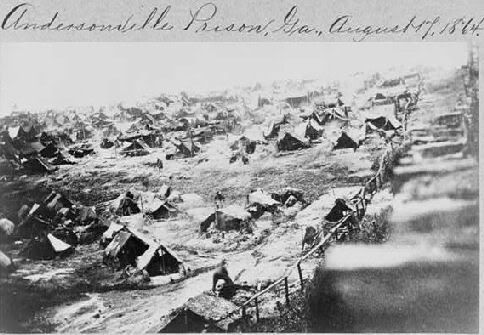
Dr. X posts this from physical therapy, where he is being treated for injuries from the explosion of his rock-o-meter and carpal tunnel due to clicking this link over and over again:
"The restaurant at the Space Needle could be a marvel, a serious gourmet dining experience with the world's best view for the most special of special occasions—a source of civic pride. Instead, it's a rip-off and a joke..."
To: Robert McConnell, Governor of East Virginia
As a painter who left politics, I have rarely done overtly political subject matter- but I would argue that human experience cannot be understood without a social class of artists- living artists, mind you- working at the limits of the human capacity to understand and perceive what it is.
He's 28, and has held a starting NFL job for the past three years. His IAYPA was better than Eli Manning's during that period. He's expendable now that McNabb's in Washington.
Dr. X posts this from Neumos:
Or, Songs the Laird Turned Me On To After He Went to College: